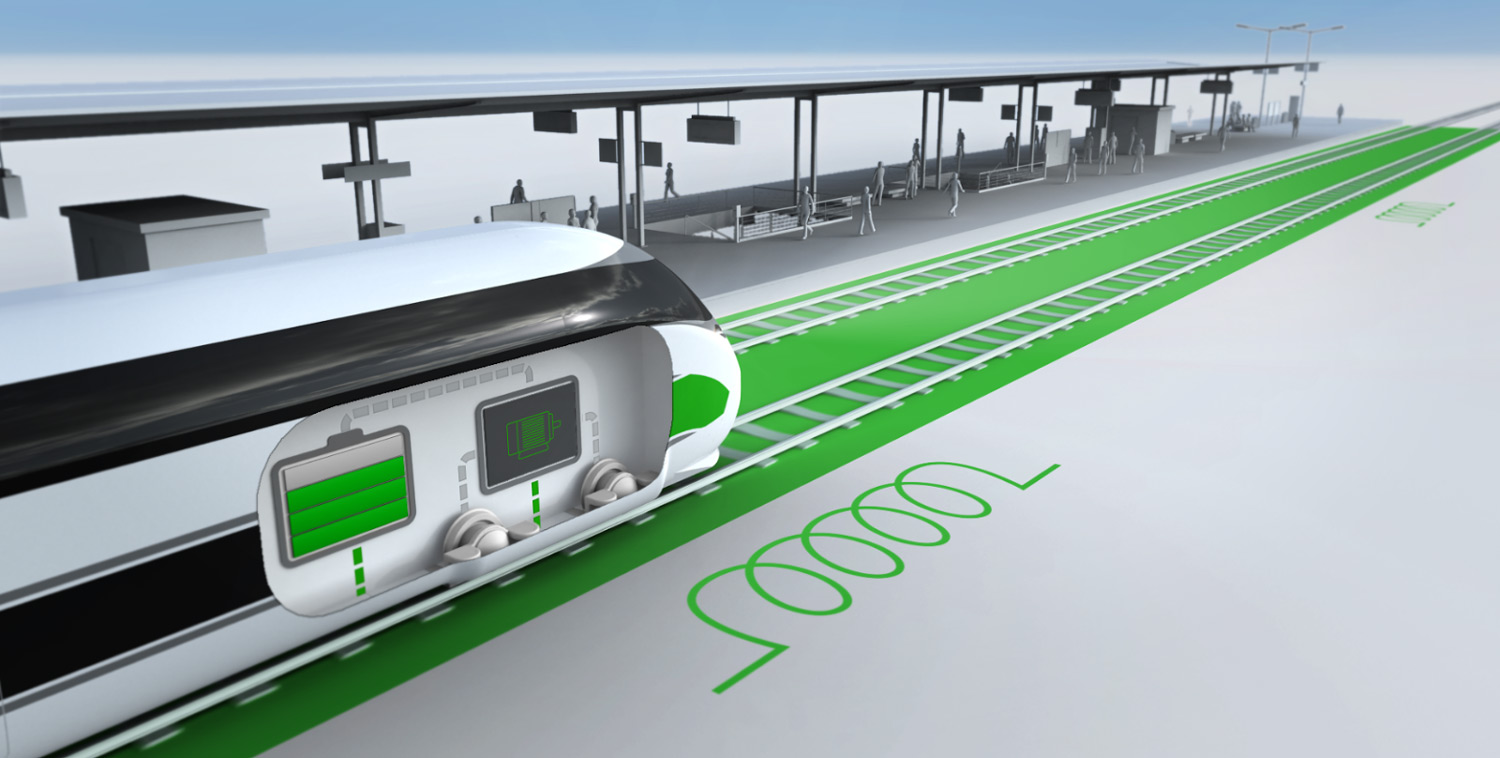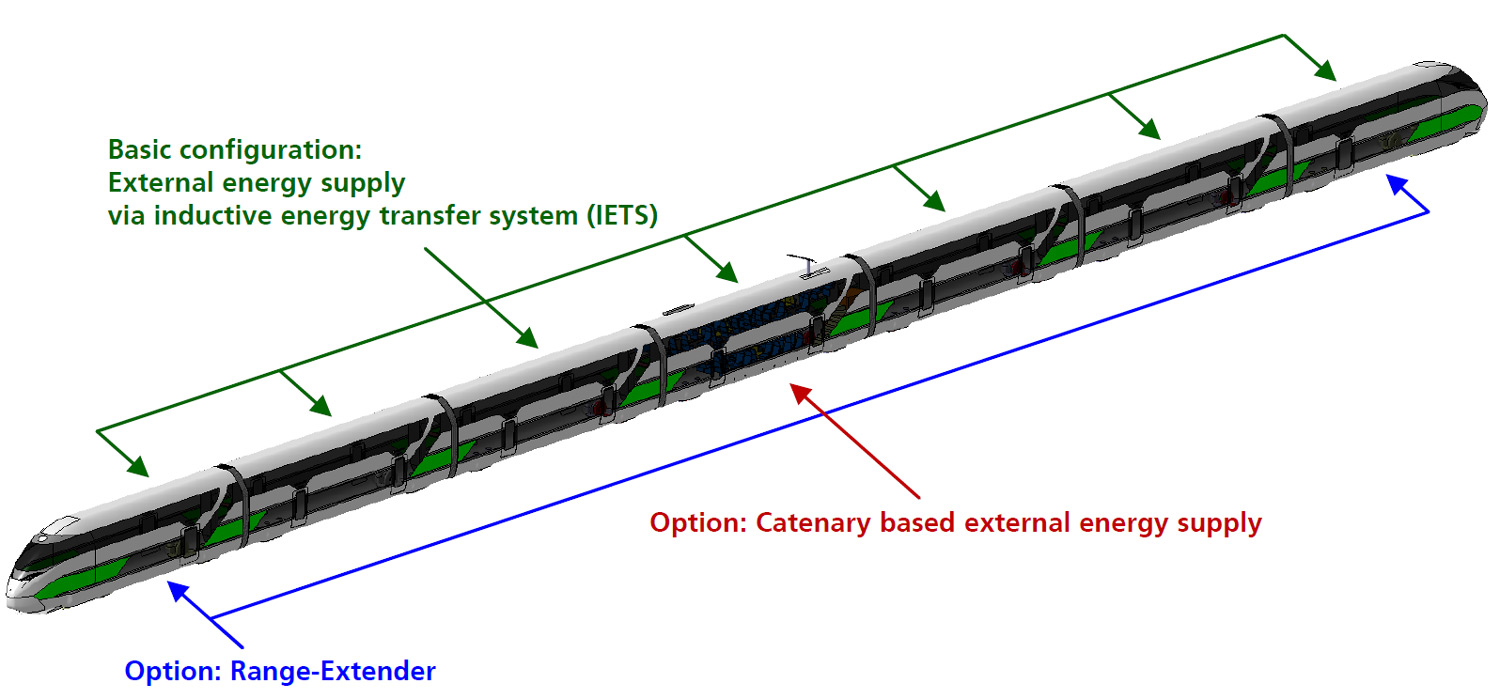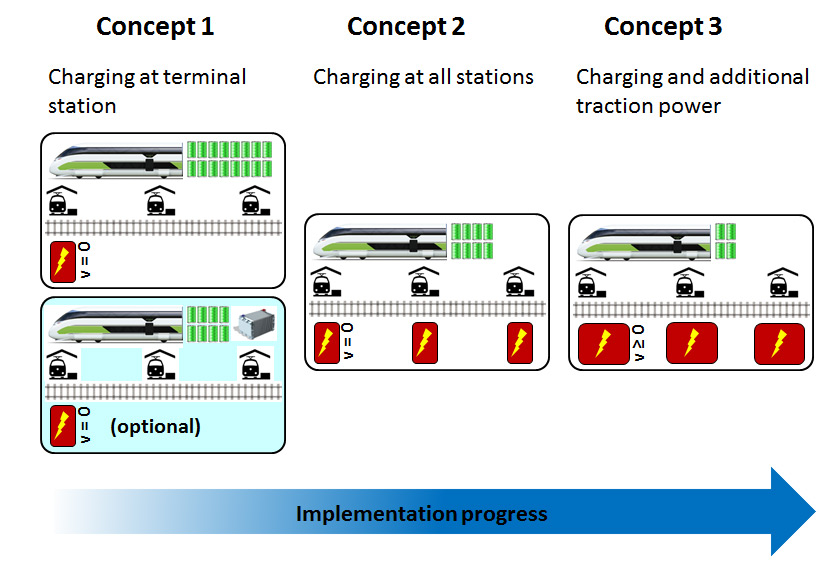
Within the “Next Generation Train“(NGT) project the German Aerospace Center (DLR) investigates in forward-looking train concepts. A novel propulsion concept for partial electrified lines is designed for the NGT LINK train concept, a fast and double deck feeder train.
Status quo
Today, approximately half of the European railway network is electrified. Service on non-electrified lines is typically provided by diesel multiple units accepting the drawbacks of pollutant emissions (CO2, particles, hydrocarbon, nitrogen oxide). However, trackside electrification with overhead catenary lines is often not economically viable, especially on less frequented routes and pure energy storage trains are limited in range.
To reduce internal CO2-emissions till 2030 by 50 % (UIC target) a novel propulsion concept for non‐electrified lines based on on-board energy storage units and inductive power supply is developed.
Conceptual requirements:
-
Propulsion system with emission-free train operation on non-electrified lines
-
Boost energy efficiency by recuperation of brake energy
-
One concept with different configurations to provide modularity, scalability and flexibility in different scenarios
-
Smooth transition from current non-electrified lines to future system
DLR-approach:
-
Combination of partial electrification and on-board energy storage
Propulsion concept and options for NGT LINK
The NGT LINK propulsion concept is primary designed for service on non-electrified lines with selective or partial external power supply via inductive energy transfer system (IETS). The concept is based on on-board electrochemical energy storage systems, whose capacity - and thus it’s mass and required packaging space - can be minimised via external charging during standstill or during driving.

If no additional trackside charging options are available, the energy supply can be realised via stand-alone electricity sources like fuel cells or power sets based on internal combustion engines. The concept also foresees combination with a catenary based external energy supply. The main current system is designed to implement all additional options. The electrochemical energy storage systems and the drive systems (converter, traction drives) are distributed along the whole train, so that the individual cars are separable and interchangeable.
By defining an inductive energy transfer system as the primary external energy supply, the basic propulsion layout is equipped with IETS Pickup modules, energy storage and drive systems.
Implementation strategy of the NGT LINK propulsion concept

The implementation progress of the novel propulsion concept into the existing infrastructure is made in three phases.
At the beginning two propulsion variants are used to substitute current diesel-driven vehicles: either a propulsion system incorporating energy storages and independent power sources (fuel cells or internal combustion engine with generator) or a pure energy storage based propulsion system. According to the implementation strategy the share between energy storage equipment installed in the vehicle(s) and trackside IETS equipment is shifted towards track with increasing demand, i.e. when the number of vehicles and / or traffic on the line increases. This allows efficient allocation of resources tailored to the specific requirements of each line.
Demonstrator for visualization of vehicle sided energy flows
For the visualization of the energy flows in the vehicle the DLR uses a demonstrator, which represents the propulsion concept of the NGT LINK.
For the simulation of the propulsion system a Modelica-model is integrated into the demonstrator as a Functional Mock-Up Unit (FMU) and coupled with the visualization of the train run and the visualization of the energy and power demands.
The user has the possibility to operate the vehicle with a traction/brake lever. Furthermore, parameters like battery capacity, utilization of auxiliaries and charging capacity can be adjusted.
Thus, the user will be able to virtually control the propulsion system of the NGT LINK.
